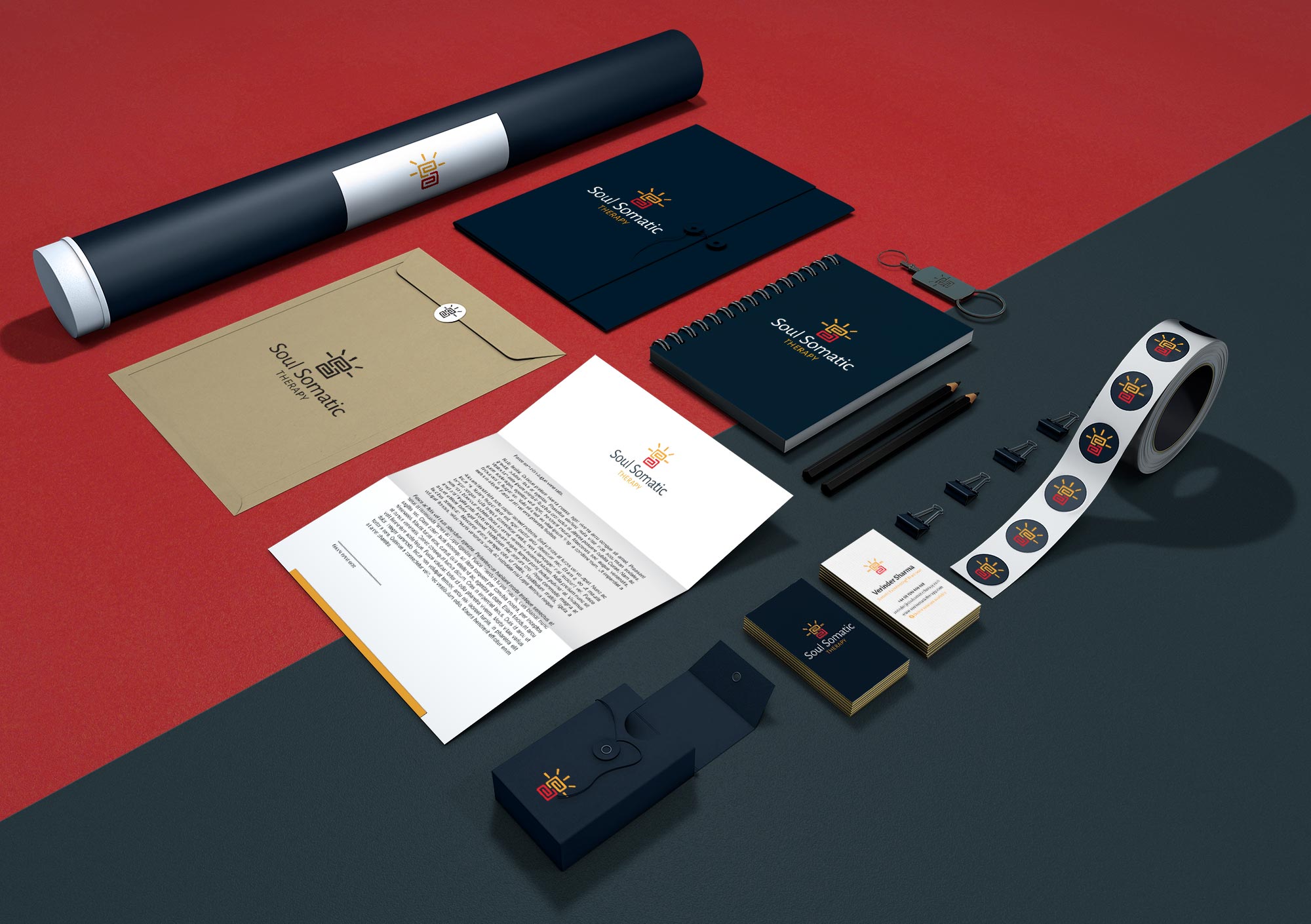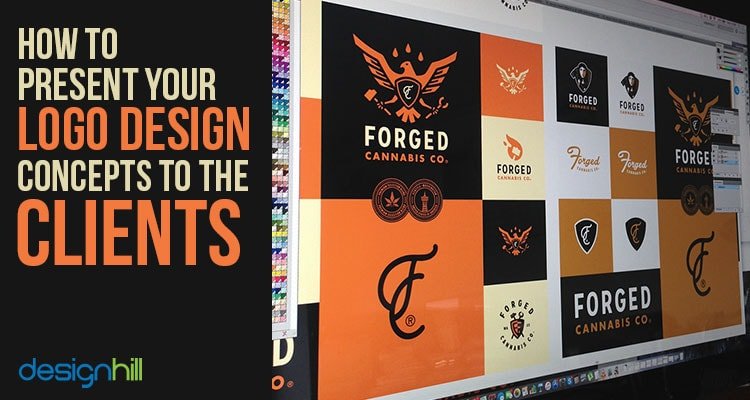Presenting logo designs can be challenging. It needs creativity and strategy.
A well-presented logo can make all the difference in impressing clients and securing projects. It’s not just about the logo itself but how you showcase it. A strong presentation highlights the thought process, creativity, and unique elements of your design. For designers, this can mean the difference between a good and a great pitch. Clients often need to see the logo in context, understand its versatility, and grasp its full potential. By presenting your logo effectively, you ensure it gets the recognition it deserves. This blog will guide you through the best ways to present logo designs, ensuring your hard work shines. For professional logo design services, consider using this logo designer on Fiverr.
Introduction To Presenting Logo Designs
Presenting logo designs is a crucial step in the design process. It allows designers to communicate their vision and rationale effectively. A well-presented logo can make a significant difference in client approval and satisfaction.
The Importance Of Presentation In Logo Design
Presentation plays a pivotal role in the success of a logo design. It is not just about showing a logo but explaining its thought process and potential impact. A good presentation highlights the strengths and versatility of the logo.
Consider including mockups, brand applications, and color variations in your presentation. This helps clients visualize the logo in different contexts. Use high-quality images and consistent formatting to maintain professionalism.
Purpose Of Effective Logo Presentation
An effective logo presentation serves multiple purposes. Firstly, it educates clients about the design choices made. Secondly, it demonstrates the logo’s applicability across various mediums. Finally, it seeks client approval and feedback.
Here are some key elements to include in your logo presentation:
- Concept Explanation: Describe the ideas and inspiration behind the logo.
- Color Palette: Show the colors used and their significance.
- Typography: Explain the font choices and their relevance.
- Mockups: Provide examples of the logo on different materials and backgrounds.
By following these steps, you can create a compelling and informative logo presentation that resonates with clients.

Credit: www.youtube.com
Understanding Your Audience
Presenting logo designs effectively involves knowing your audience. Different clients have different needs and expectations. Understanding these can make your presentations more impactful and persuasive.
Identifying Client Expectations
Clients often have varied expectations based on their background and industry. Here’s a quick guide to identify what your client might expect:
| Client Type | Expectation |
|---|---|
| Corporate Clients | Professional, clean, and modern designs. |
| Startups | Innovative, fresh, and dynamic designs. |
| Creative Agencies | Unique, bold, and artistic designs. |
Understanding these expectations helps in tailoring your presentation to meet their specific needs.
Tailoring Presentations To Different Audiences
Each audience requires a different approach. Here are some tips for tailoring your presentations:
- Corporate Clients: Use formal language. Highlight the logo’s professionalism and versatility. Show how it aligns with their brand identity.
- Startups: Focus on innovation. Emphasize the logo’s uniqueness and how it stands out in the market.
- Creative Agencies: Be bold. Showcase the creative process. Highlight the artistic elements and thought process behind the design.
By tailoring your presentations, you can better connect with your audience and effectively convey the value of your logo design.
Key Elements Of An Effective Logo Presentation
Presenting logo designs effectively can make or break a client’s decision. An effective presentation highlights the logo’s strengths, ensuring it resonates with the client’s vision and brand identity. This section covers the key elements that make a logo presentation stand out.
Clarity And Simplicity
Clarity and simplicity are crucial for a successful logo presentation. Your design should be easy to understand and memorable.
- Use clean lines and minimalistic design elements.
- Avoid clutter and unnecessary details.
- Ensure the logo is scalable to different sizes.
Providing a clear and simple logo helps clients quickly grasp the concept and appreciate its elegance.
Storytelling Through Design
Every logo has a story. Share the thought process behind your design. Explain how the elements reflect the brand’s values and mission.
For instance, a logo for an eco-friendly company might use green colors and leaf motifs to symbolize sustainability. This storytelling aspect helps clients connect emotionally with the design.
Contextual Examples
Showing the logo in real-world contexts helps clients visualize its application. Use mockups to present the logo on:
- Business cards
- Websites
- Product packaging
- Signage
Providing contextual examples ensures that clients see the logo’s versatility and functionality across various mediums.
These key elements can make your logo presentation more effective, engaging, and persuasive.
Techniques For Presenting Logo Designs
Creating a strong logo is just one part of the design process. Presenting your logo designs in an engaging and professional manner can make a significant impact. Below are effective techniques to showcase your logo designs to clients.
Using Mockups For Real-world Context
Mockups are a fantastic way to show how a logo will look in various settings. They help clients visualize the logo in real-world applications. For instance, display the logo on:
- Business cards
- Stationery
- Signage
- Websites
- Merchandise
Using mockups can provide a tangible feel and demonstrate the logo’s versatility. This approach can make the design more relatable and easier for clients to understand.
Creating A Narrative Around The Logo
Building a story around your logo design helps clients connect emotionally. Explain the inspiration behind the design and how it aligns with the client’s brand values. Use a structured narrative:
- Introduce the concept
- Describe the design process
- Highlight key elements and their significance
- Show the logo’s evolution with sketches or drafts
This storytelling approach can make your presentation more compelling and memorable.
Leveraging Digital Tools And Software
Utilizing the latest digital tools and software can enhance your presentation. Consider using:
- Adobe Illustrator or Photoshop for high-quality visuals
- Presentation software like PowerPoint or Keynote
- 3D rendering tools for dynamic displays
- Interactive prototypes to demonstrate functionality
These tools can add a professional touch and make your presentation stand out. They help in showcasing the logo’s adaptability and technical precision.
Structuring Your Logo Presentation
Presenting your logo designs effectively is crucial for client approval. A well-structured presentation can make a significant difference. It highlights your design process and showcases the logo’s versatility. This guide will help you structure your logo presentation for maximum impact.
Starting With The Logo Concept
Begin by explaining the logo concept. Describe the inspiration behind the design. Share the thought process and the story that led to the final concept. Use visuals to support your explanation.
- Initial sketches and drafts
- Mood boards or inspiration sources
- Color palette choices
Ensure the client understands the rationale behind the design. This builds trust and appreciation for your work.
Showcasing Variations And Flexibility
Next, demonstrate the variations and flexibility of the logo. Show how the logo adapts to different contexts and sizes. Include different color variations and backgrounds.
| Variation | Example |
|---|---|
| Full-color version |  |
| Black and white version |  |
| Monochrome version |  |
Show the logo in real-life scenarios. This could include business cards, websites, or merchandise. It helps the client visualize the logo in action.
Highlighting Key Design Elements
Finally, focus on the key design elements of the logo. Explain the significance of each element.
- Typography: Why you chose the font
- Color scheme: The meaning behind the colors
- Iconography: The symbolism of any icons used
Use close-up images to highlight these elements. Detail how each component contributes to the overall design. This reinforces the thoughtfulness and care put into the design.
Tips For Engaging Your Audience
Presenting logo designs can be a daunting task. The goal is to engage your audience, ensuring they understand and appreciate the design process and the final product. Here are some practical tips to keep your audience captivated.
Using Interactive Elements
Interactive elements can make your presentation more dynamic. Consider using animation to showcase the evolution of the logo. This method can help your audience see the thought process and creativity involved in the design.
- Use clickable prototypes to demonstrate how the logo will look on various products.
- Incorporate before-and-after sliders to show the transformation of the logo design.
- Utilize interactive PDFs that allow clients to explore different color schemes and layouts.
These elements not only make your presentation more engaging but also help the audience interact with the design, leading to a deeper understanding and appreciation.
Encouraging Client Feedback
Encouraging client feedback is crucial in the logo design process. It ensures that the final product aligns with the client’s vision and needs. Here are some ways to effectively gather feedback:
- Ask open-ended questions to get detailed responses.
- Provide a feedback form with specific questions about the design elements.
- Schedule regular review meetings to discuss progress and gather thoughts.
By actively seeking feedback, you make the client feel involved in the process. This can lead to higher satisfaction with the final design.
Adapting To Client Reactions
Adaptability is a key trait for any successful designer. Being flexible and responsive to client reactions can make a significant difference in the final outcome. Here are some strategies:
| Client Reaction | Adaptation Strategy |
|---|---|
| Positive Feedback | Build on the elements they like and enhance them further. |
| Negative Feedback | Identify specific issues and provide alternative solutions. |
| Indifference | Present new ideas or directions to reignite their interest. |
Being responsive and adaptive not only helps in refining the design but also builds trust and rapport with the client.
Common Mistakes To Avoid
Presenting logo designs involves more than just showcasing your creativity. It requires a strategic approach to ensure client satisfaction. Avoiding common mistakes can make a significant difference in delivering a successful presentation. Below are some key areas where designers often falter.
Overloading With Information
Avoid overwhelming your client with too much information. Focus on the key elements of your design. Highlight the unique features and core concepts. Use bullet points to break down complex information:
- Color choices and their meanings
- Typography and its relevance
- Design inspiration and rationale
Keep your explanations concise and to the point. Clients appreciate clarity and brevity.
Ignoring Client Preferences
Not considering client preferences can lead to dissatisfaction. Always keep their input and feedback in mind. Use a table to track client preferences:
| Client Preference | How it was Addressed |
|---|---|
| Preferred Color Scheme | Used client’s chosen colors in the design |
| Font Style | Incorporated client’s preferred typography |
Respecting client choices builds trust and ensures a smoother design process.
Lack Of Preparation
Entering a presentation unprepared can be disastrous. Ensure all files and documents are ready. Practice your presentation to avoid glitches. Here are some preparation tips:
- Double-check all design files for accuracy.
- Prepare a brief but detailed explanation for each design choice.
- Anticipate possible questions and prepare answers.
Being well-prepared shows professionalism and respect for your client’s time.
By avoiding these common mistakes, you enhance the overall presentation experience for your clients. This leads to successful collaborations and satisfied clients.

Credit: logogeek.uk

Credit: www.ebaqdesign.com
Frequently Asked Questions
What Are Key Elements Of A Logo Presentation?
A logo presentation should include the logo in various contexts. Show it on different backgrounds, in different sizes, and alongside other design elements.
How To Make A Logo Presentation Stand Out?
Use high-quality mockups and real-world applications. Include clear explanations for design choices. Highlight unique features and versatility.
Why Use Mockups In Logo Presentations?
Mockups help clients visualize the logo in real-life situations. They make the design more relatable and impactful.
Should I Include A Brand Story In The Presentation?
Yes, including a brand story gives context. It helps clients understand the logo’s purpose and design decisions.
Conclusion
Presenting logo designs effectively is crucial for designers. Clear visuals and context help clients understand the design’s potential. Keep your presentations simple and focused. Show different applications, like business cards and websites. This gives clients a real-world view. Consistency in presentation builds trust and clarity. Use tools that enhance your visuals and support your brand. For expert logo designs, check out this Logo designer on Fiverr. This service ensures seamless website performance and quick technical issue resolution. Happy designing!

I have been working as an SEO Expert in Bangladesh for a long time and now providing the best SEO Service in Bangladesh. With the approach to Semantic SEO that eschews superfluity. I can get your business web page at the top of the SERP list. Using the latest digital marketing trends, I can enhance your online visibility and drive more website traffic.
